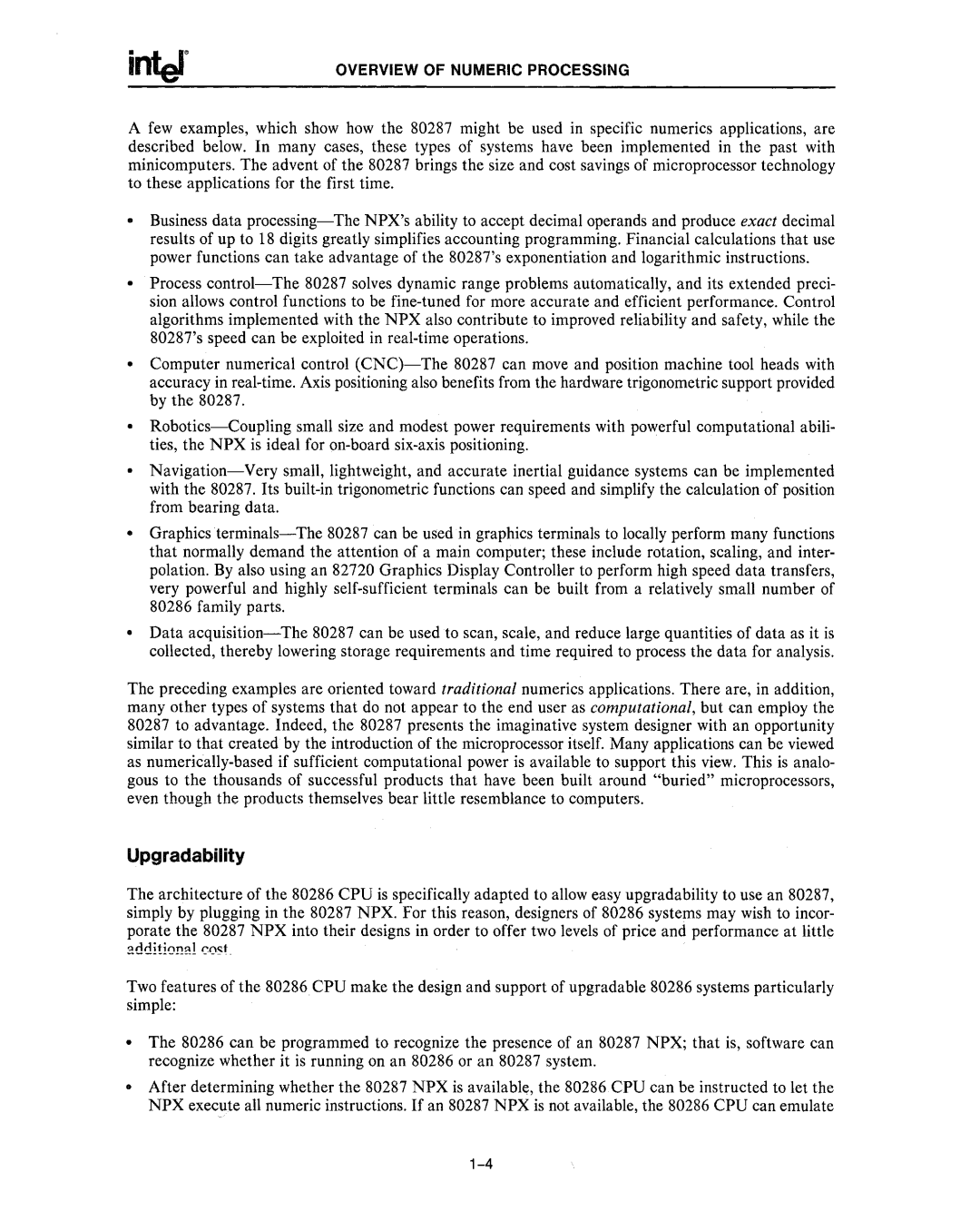
OVERVIEW OF NUMERIC PROCESSING
A few examples, which show how the 80287 might be used in specific numerics applications, are described below. In many cases, these types of systems have been implemented in the past with minicomputers. The advent of the 80287 brings the size and cost savings of microprocessor technology to these applications for the first time.
•Business data
Process
Computer numerical control
•Graphics
Data
The preceding examples are oriented toward traditional numerics applications. There are, in addition, many other types of systems that do not appear to the end user as computational, but can employ the 80287 to advantage. Indeed, the 80287 presents the imaginative system designer with an opportunity similar to that created by the introduction of the microprocessor itself. Many applications can be viewed as
Upgradability
The architecture of the 80286 CPU is specifically adapted to allow easy upgradability to use an 80287, simply by plugging in the 80287 NPX. For this reason, designers of 80286 systems may wish to incor- porate the 80287 NPX into their designs in order to offer two levels of price and performance at little
2dditi0!!~! GOSt.
Two features of the 80286 CPU make the design and support of upgradable 80286 systems particularly simple:
•The 80286 can be programmed to recognize the presence of an 80287 NPX; that is, software can recognize whether it is running on an 80286 or an 80287 system.
After determining whether the 80287 NPX is available, the 80286 CPU can be instructed to let the NPX execute all numeric instructions. If an 80287 NPX is not available, the 80286 CPU can emulate
